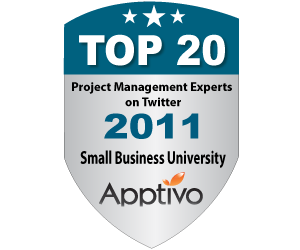An organization must execute well. While project management
can make up for mistakes in planning, excellent project management begins in
the planning phase.
Project management is the art of managing the project and
its deliverables with a view to produce finished products or service. There are
many ways in which a project can be carried out and the way in which it is
executed is PM. Without a planned approach to the task of managing the projects
and achieving objectives, it would be very difficult for the organizations to
successfully execute the projects within the constraints of time, scope and
quality and deliver the required result.
Many of us are either new to PM or our organization is new
to a structured PM approach. The key is to set up a good process and build
on it through successful project deployments and understand what works best for
your organization and customers. You can build a project management
methodology, but be open to tweaking it along the way – especially for newer or
smaller organizations as you learn what works best for the size projects you
manage.
According to
Insightly.com, here are things you can do today quickly and easily that
will make you a better PM and make your overall practice more successful:
Use a good customer
management tool. There are so many cloud-based options abound for managing
your customers. It can be so easy to lose track of current clients,
potential clients and those clients who want you to call them back next quarter
when they have more money to spend. You need a good CRM tool, so download
a few trials and see which one works best.
Use a good PM tool. There are also a lot of cloud-based and affordable PM tools. Search and try a few out…there are hundreds available now. You can even use a combination of a CRM and a separate project management application, or you can evaluate CRM applications that include PM functionality.
Collect templates and planning documents. You need to plan – you need those requirements documents, communication plans and statements of work. And, you need templates, pipelines and stages so that you can easily repeat project successes. Project schedule templates are difficult to create from scratch, but once you have effective ones to choose from you can tailor them to get started on any type of project quickly and confidently.
Meet with your customer regularly. We should all be scheduling weekly status meetings with our project teams, as well as reaching out regularly to your customer just to ensure that they feel all the bases are being covered. It’s better to find out early about a concern than to let it fester into something that they end up calling your CEO about later in the project.
Be professional. You probably have at your disposal a solid group of very skilled project resources. Treat them as such and they will follow you into battle. They won’t soon forget the recognition you give them for jobs well done. Project managers don’t often get the praises they probably deserve for individual project successes, but that should never stop you from treating your team the way you would want to be treated. It will pay off dividends throughout the engagement and when these same resources end up on your teams later on other projects.
Use a good PM tool. There are also a lot of cloud-based and affordable PM tools. Search and try a few out…there are hundreds available now. You can even use a combination of a CRM and a separate project management application, or you can evaluate CRM applications that include PM functionality.
Collect templates and planning documents. You need to plan – you need those requirements documents, communication plans and statements of work. And, you need templates, pipelines and stages so that you can easily repeat project successes. Project schedule templates are difficult to create from scratch, but once you have effective ones to choose from you can tailor them to get started on any type of project quickly and confidently.
Meet with your customer regularly. We should all be scheduling weekly status meetings with our project teams, as well as reaching out regularly to your customer just to ensure that they feel all the bases are being covered. It’s better to find out early about a concern than to let it fester into something that they end up calling your CEO about later in the project.
Be professional. You probably have at your disposal a solid group of very skilled project resources. Treat them as such and they will follow you into battle. They won’t soon forget the recognition you give them for jobs well done. Project managers don’t often get the praises they probably deserve for individual project successes, but that should never stop you from treating your team the way you would want to be treated. It will pay off dividends throughout the engagement and when these same resources end up on your teams later on other projects.
Amanda Ciccatelli,
Social Media Strategist at IIR USA in New York City, has a background in
digital and print journalism, covering a variety of topics in business
strategy, marketing, and technology. She previously worked at Technology Marketing
Corporation as a Web Editor where she covered breaking news and feature stories
in the tech industry. She can be reached at aciccatelli@iirusa.com.
Follow her at @AmandaCicc.





























